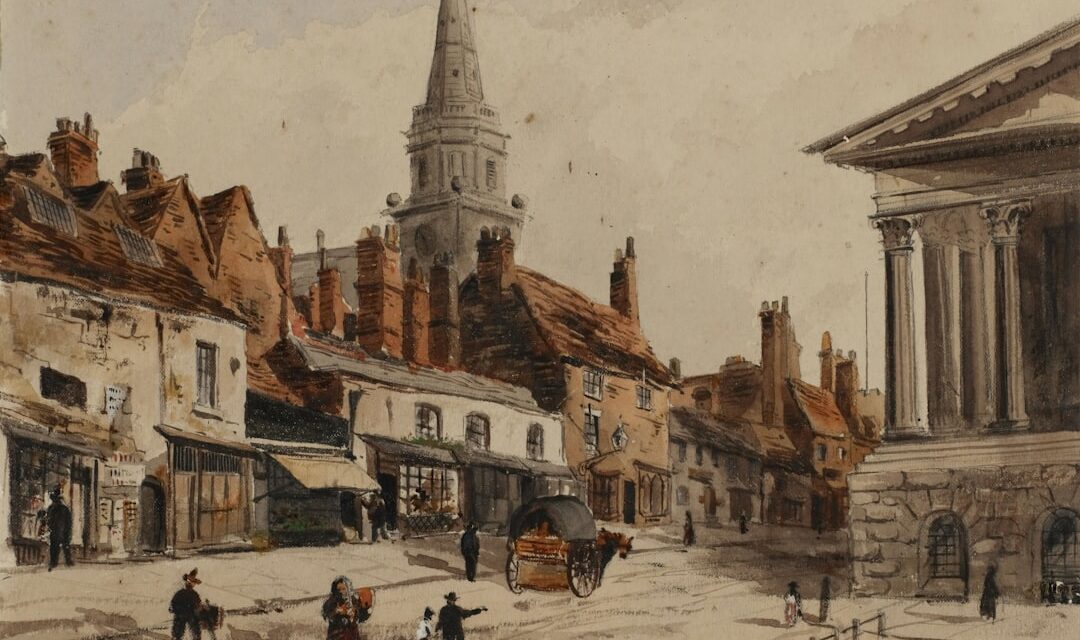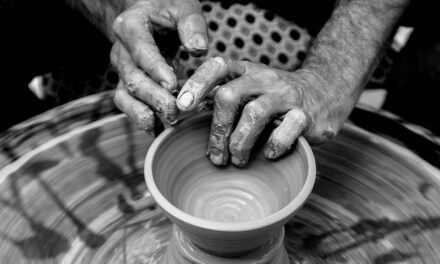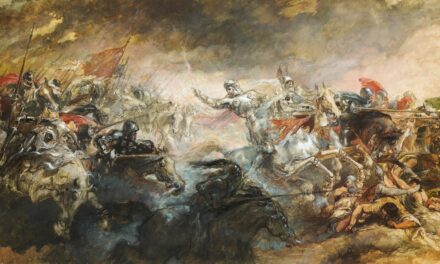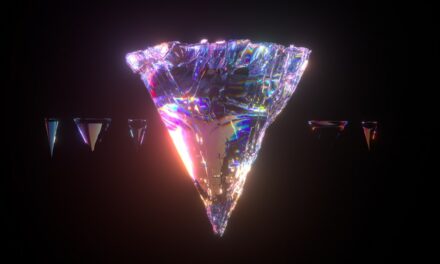Encaustic painting, a technique that employs heated beeswax mixed with coloured pigments, boasts a rich and storied history that dates back to ancient civilisations. The term “encaustic” is derived from the Greek word “enkaustikos,” meaning “to heat or burn in.” This method was notably used by the ancient Greeks and Romans, who applied it to create vibrant and durable artworks. One of the most famous examples of encaustic painting from antiquity is the Fayum mummy portraits, which were created in Egypt between the 1st and 3rd centuries AD.
These lifelike images were painted directly onto wooden panels using the encaustic technique, allowing for remarkable detail and a striking luminosity that has captivated art historians and enthusiasts alike for centuries. As time progressed, the use of encaustic painting saw a decline during the Middle Ages, overshadowed by the rise of oil painting techniques. However, it experienced a resurgence in the 19th century, particularly among American artists who sought to revive traditional methods.
The late 20th century marked another significant revival, as contemporary artists began to explore encaustic painting’s unique properties and versatility. This renewed interest has led to a flourishing community of encaustic practitioners who experiment with the medium, pushing its boundaries and integrating it with modern artistic practices. Today, encaustic painting is celebrated not only for its historical significance but also for its capacity to convey depth, texture, and a sense of immediacy that resonates with both artists and viewers.
Summary
- Encaustic painting dates back to ancient Greece and Egypt, where it was used for portraits and decorative purposes.
- Encaustic painting requires beeswax, resin, and pigment, as well as a heat source and brushes or other tools for application.
- Techniques in encaustic painting include layering, fusing, and scraping to create unique textures and effects.
- Safety precautions for working with hot wax include proper ventilation, protective clothing, and a fire extinguisher nearby.
- Creating texture and dimension in encaustic painting can be achieved through embedding materials, carving, or using heat to manipulate the wax.
Materials and Tools for Encaustic Painting
The primary materials used in encaustic painting are beeswax, damar resin, and pigments. Beeswax serves as the foundation of the medium, providing a malleable and durable base that can be manipulated when heated. Damar resin is often added to enhance the wax’s hardness and improve its adhesion properties, resulting in a more robust final product.
Pigments can be derived from various sources, including natural minerals and synthetic dyes, allowing artists to achieve a wide spectrum of colours. The choice of pigments is crucial, as some may react differently when mixed with wax or when exposed to heat, affecting the overall appearance of the artwork. In addition to these core materials, artists require specific tools to work effectively with encaustic paint.
A heat source is essential; many artists use electric griddles or hot plates to maintain a consistent temperature for melting the wax. Brushes made from natural bristles are preferred for applying the wax, as they can withstand higher temperatures without melting or deforming. Other tools include palette knives for mixing and applying wax, as well as various implements for creating texture and patterns within the medium.
Additionally, artists may utilise heat guns or torches to manipulate the wax further, allowing for techniques such as fusing layers or creating smooth surfaces. The combination of these materials and tools enables artists to explore the full potential of encaustic painting.
Techniques and Processes in Encaustic Painting
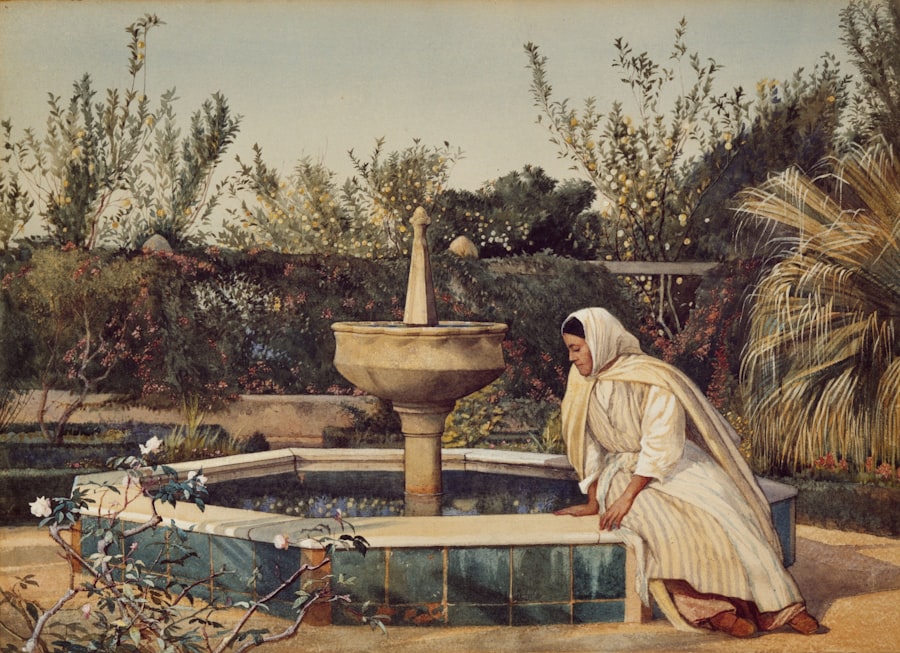
Encaustic painting encompasses a variety of techniques that allow artists to create intricate and dynamic works of art. One fundamental process involves layering, where heated wax is applied in successive coats to build depth and complexity. Each layer must be fused with heat to ensure proper adhesion and to create a seamless transition between colours and textures.
This layering technique not only enhances the visual richness of the artwork but also allows for the incorporation of various elements such as photographs, fabric, or other materials that can be embedded within the wax. The ability to layer different media adds an exciting dimension to encaustic painting, making it a versatile choice for contemporary artists. Another significant technique in encaustic painting is sgraffito, which involves scratching into the surface of the wax to reveal underlying layers or create intricate designs.
This method can produce striking contrasts and textures that add visual interest to the piece. Additionally, artists often experiment with different tools to manipulate the wax while it is still warm, creating unique patterns and effects. Techniques such as blowing through straws or using combs can yield unexpected results, showcasing the spontaneity inherent in working with hot wax.
The interplay between control and unpredictability is a hallmark of encaustic painting, allowing artists to express their creativity in diverse ways.
Safety Precautions for Working with Hot Wax
Working with hot wax presents certain safety challenges that artists must address to ensure a safe creative environment. First and foremost, it is crucial to maintain proper ventilation when melting beeswax and damar resin, as fumes can be released during the heating process. Artists should work in well-ventilated spaces or use fume extractors to minimise inhalation risks.
Additionally, it is advisable to keep flammable materials away from heat sources to prevent accidental fires. Having a fire extinguisher on hand is also a prudent measure when working with any heated materials. Another important safety consideration involves protecting oneself from burns.
Artists should wear heat-resistant gloves when handling hot tools or wax and should be cautious when using heat guns or torches. It is also wise to have a first aid kit readily available in case of minor accidents. Furthermore, understanding the properties of the materials being used is essential; for instance, knowing how different pigments react under heat can prevent unexpected outcomes that may pose safety risks.
By adhering to these safety precautions, artists can enjoy the creative process while minimising potential hazards associated with encaustic painting.
Creating Texture and Dimension in Encaustic Painting
One of the most captivating aspects of encaustic painting is its ability to create rich textures and dimensions that engage viewers on multiple sensory levels. Artists can achieve texture through various methods, such as layering different thicknesses of wax or incorporating mixed media elements like sand or fabric into their compositions. The tactile quality of encaustic paintings invites touch and interaction, making them distinct from other two-dimensional art forms.
By manipulating the wax while it is still warm, artists can create raised areas or depressions that add depth and intrigue to their work. Moreover, tools such as combs or palette knives can be employed to carve into the surface of the wax, producing intricate patterns that enhance visual interest. The interplay between light and shadow on textured surfaces further amplifies the dimensionality of encaustic paintings, creating an ever-changing experience as viewers move around the artwork.
This dynamic quality allows artists to explore themes of impermanence and transformation within their work, as light interacts with texture in unique ways depending on the viewer’s perspective. Ultimately, creating texture and dimension in encaustic painting not only enriches the aesthetic experience but also invites deeper contemplation of the artwork’s meaning.
Colour Mixing and Layering in Encaustic Painting

Colour mixing in encaustic painting presents both challenges and opportunities for artists seeking to achieve their desired palette. Unlike traditional paint mediums where colours can be easily blended on a palette before application, encaustic paints require careful consideration due to their unique properties when heated. Artists often mix pigments directly into molten wax on a heated surface, allowing for immediate application but necessitating an understanding of how colours will interact once cooled.
This process encourages experimentation; artists may find that certain combinations yield unexpected results that can enhance their creative vision. Layering colours is another essential aspect of encaustic painting that contributes to its distinctive aesthetic. By applying multiple layers of coloured wax, artists can create a sense of depth and luminosity that is difficult to achieve with other mediums.
Each layer must be fused properly before adding subsequent coats; this process not only ensures adhesion but also allows for subtle colour shifts as underlying layers influence the appearance of those applied on top. The translucency of encaustic wax means that colours can appear differently depending on their placement within the layers, leading to rich visual effects that invite closer inspection. This interplay between colour mixing and layering is fundamental to achieving the vibrant and complex compositions characteristic of encaustic art.
Special Effects and Experimental Approaches in Encaustic Painting
The versatility of encaustic painting lends itself well to special effects and experimental approaches that push the boundaries of traditional techniques. Artists often incorporate unconventional materials into their work—such as found objects or organic materials—to create unique textures and visual narratives within their pieces. For instance, embedding items like leaves or fabric into layers of wax can produce striking contrasts between organic forms and smooth surfaces while also adding an element of surprise for viewers who may not expect such combinations in a painted artwork.
Additionally, many contemporary encaustic artists experiment with mixed media approaches by combining wax with other materials like acrylics or oils. This fusion allows for innovative techniques such as pouring or dripping wax over painted surfaces, creating dynamic interactions between different mediums that challenge conventional definitions of painting itself. Some artists even utilise digital technology by incorporating printed images into their works before encasing them in layers of wax—an approach that marries traditional craftsmanship with modern advancements in art-making.
These experimental methods not only expand the possibilities within encaustic painting but also encourage dialogue about what constitutes art in today’s ever-evolving landscape.
Finishing and Preserving Encaustic Paintings
The finishing touches on an encaustic painting are crucial for ensuring its longevity and visual appeal over time. Once an artwork has been completed through layering and fusing techniques, it is essential to allow it to cool completely before handling it further. This cooling period helps solidify the wax structure while preventing any unintended smudging or damage during subsequent processes such as polishing or framing.
Artists often choose to buff their finished pieces using soft cloths or brushes; this not only enhances the surface sheen but also brings out the vibrancy of colours embedded within the wax. Preserving encaustic paintings requires careful consideration regarding storage and display conditions. It is advisable to keep artworks away from direct sunlight or extreme temperature fluctuations, as these factors can compromise the integrity of the wax over time.
When displaying encaustic pieces, using glass frames can provide protection from dust while allowing viewers to appreciate their dimensional qualities without direct contact. Additionally, regular maintenance—such as gentle dusting—can help preserve both the aesthetic qualities and structural integrity of these unique artworks for generations to come. By understanding proper finishing techniques and preservation methods, artists can ensure that their encaustic paintings remain vibrant expressions of creativity long after they leave the studio.
For those intrigued by the unique qualities of encaustic painting, exploring different art movements can provide further insight into the evolution of artistic techniques. A recommended read is An Introduction to Impressionism, which delves into a pivotal movement that revolutionised the use of light and colour in art. Understanding Impressionism can enhance one’s appreciation of the textural and chromatic depth achievable in encaustic painting, linking past innovations with contemporary practices.
